Author: Xuan Rui | 0xDragon888
Source: AC Capital Research
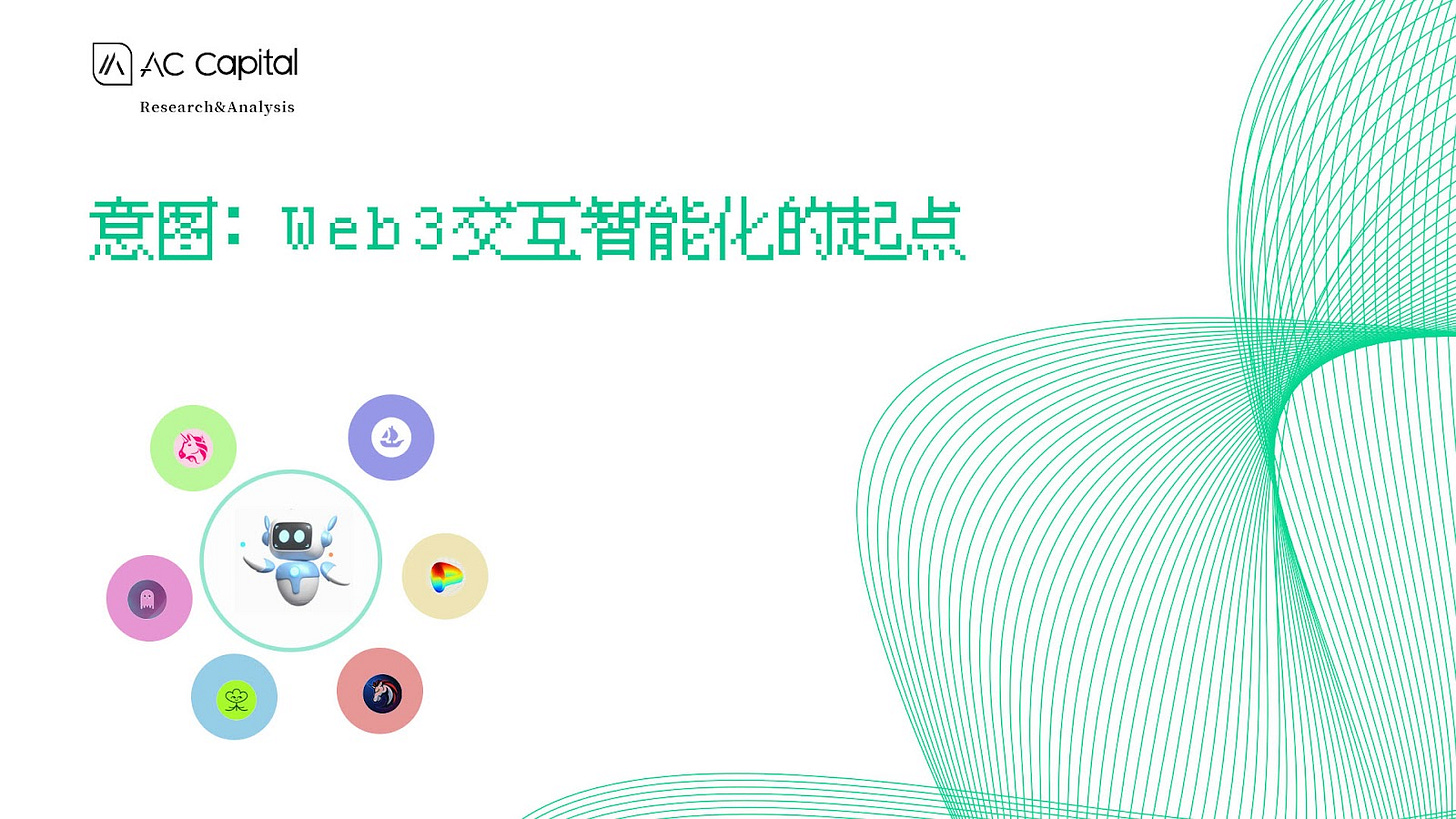
//
This article will combine the understanding of intent opened by Anoma and TG Bot, and trace the AI paradigm shift behind intent, deeply understand the evolution, interaction paradigm, current situation, trends of intent concepts, and finally look forward to the challenges and future of Web3 interactive intelligence.
Abstract (TL;DR)
(1) Understanding Intent: Top-down Anoma and bottom-up TG Bot
(2) Deepening Intent: AI is the New UI: Complex Commands vs. Simple Intent
(3) Navigating Intent: Evolution of the concept of Intent, interaction paradigm, current situation, trends
(4) Guiding Intent: Challenges and prospects of Web3 interactive intelligence
In June, Paradigm's official website published an article "Intent-Based Architectures and Their Risks," which brought the concept of Intent to the public for the first time. The development of protocols and infrastructure related to intent has been rapid, and it has become an unavoidable topic in the crypto world at the ETHCC conference in July.
Intent is not a new concept, as DForce founder Mindao said: "The trend in the currency circle has always been to automate operations to the extreme. Aggregators, CEX, contract wallets, and cross-chain DeFi are all doing this work, as well as Chainlink and the recent automated middleware, and the recent Telegram bot."
However, intent brings about new changes. In the past, the core was product interaction, but in the AGI era, the core is human-machine interaction. AI/LLM (large language models) holds more potential to enhance Crypo interaction.
Top-down Anoma and bottom-up Unibot
In the past six months, there have been a series of hot protocols, projects, and infrastructure related to intent. Here are two excellent examples.
Although there are many projects related to intent, the most dazzling is the Anoma Foundation, which completed its third round of financing of $25 million at the end of May 2023. In the context of severe homogenization of Layer1, Anoma Foundation, with its intent-centric architecture Anoma (Dapp full-stack architecture) and Namada (privacy Layer1), has received a total of $57.8 million in investment from institutions, ranking 7th in the amount of financing for unreleased Layer1/Layer2.
Looking back at Anoma's public speech at EthCC, founder Adrian Brink said the magic of Anoma lies in: all interactions start with intent, and user-expressed intent is processed through the Balck-box Architecture (Anoma black box architecture, also known as Magic Happens), which implements the core transaction process based on intent interaction:
User Interaction: Users can send transparent, private, or protected intent to Anoma's Anoma black box architecture (intent gossip Layer).
Intent Collection and Matching: The solver of Anoma's black box architecture collects intent, performs balanced state transitions to match transaction counterparts.
Transaction Processing: Matched transactions are submitted to the encrypted mempool, and validators send proposer-packed blocks to the execution layer, complete execution and verify validity, and finally update the state root.
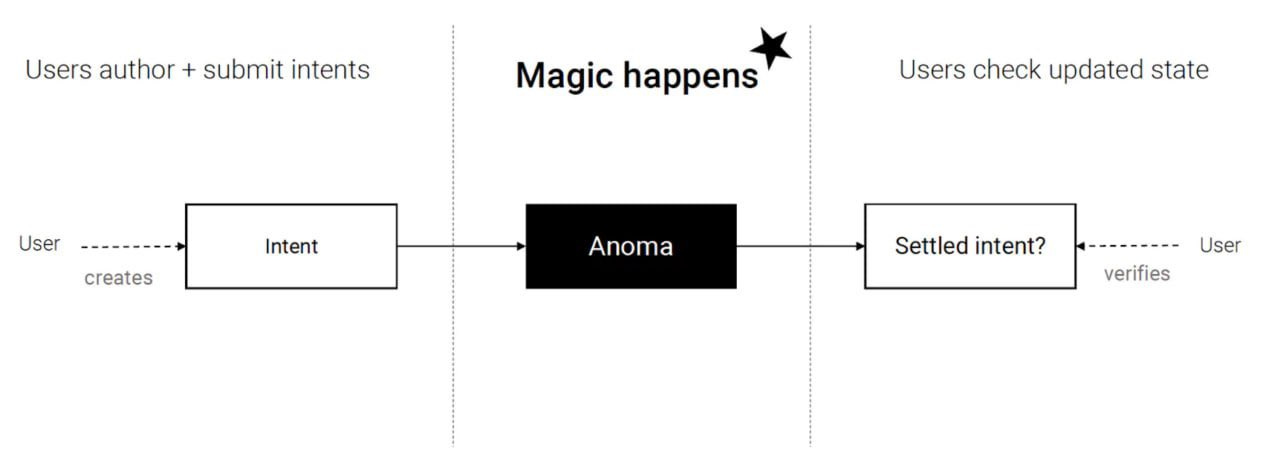
Source: https://twitter.com/Delphi_Digital/status/1696626180752056764
Behind the new form of interaction, the Anoma team insightfully identified the pain points of the underlying blockchain protocols and reviewed the limitations of the architecture from the first-generation Bitcoin scriptable settlement to the second-generation Ethereum programmable settlement, which means that current application protocols have at least one Web2 component and cannot achieve transaction counterpart discovery and resolution. They stated that the intent-centric Anoma architecture is the third-generation Dapp architecture of blockchain protocols, allowing users to define the desired result state, achieving efficient and customizable privacy transactions at the intent level. The intent-centric Dapp architecture will usher in a new era.

Source: https://www.youtube.com/watch?v=mdYwfW6tMJ8
With high financing and new technological architecture, Anoma, currently developed by a team of 37 interdisciplinary members from Heliax, has been in development for 2 years. Although the progress of the Heliax development team has been slow, it has formed a complete innovative ecosystem:
Anoma: A general Dapp architecture centered on intent, which can be modularly deployed to L1, L1.5, L2, and embedded in various EVM frameworks for invocation with modular components.
Namada: The privacy settlement Layer1 of the Anoma ecosystem, using PoS mechanism and used for asset-independent cross-chain privacy, will be compatible with Ethereum and IBC chains in the future.
AnomaVM: Simplifies DApp application development on Anoma, using Juvix (intent-centric programming language) and VampIR (circuit programming language).
Typhon: Improves the Tendermint consensus based on Cosmos.
Taiga: Provides a unified execution environment for composable privacy. Taiga defines three types of intent: transparent intent, masked intent, and private intent.
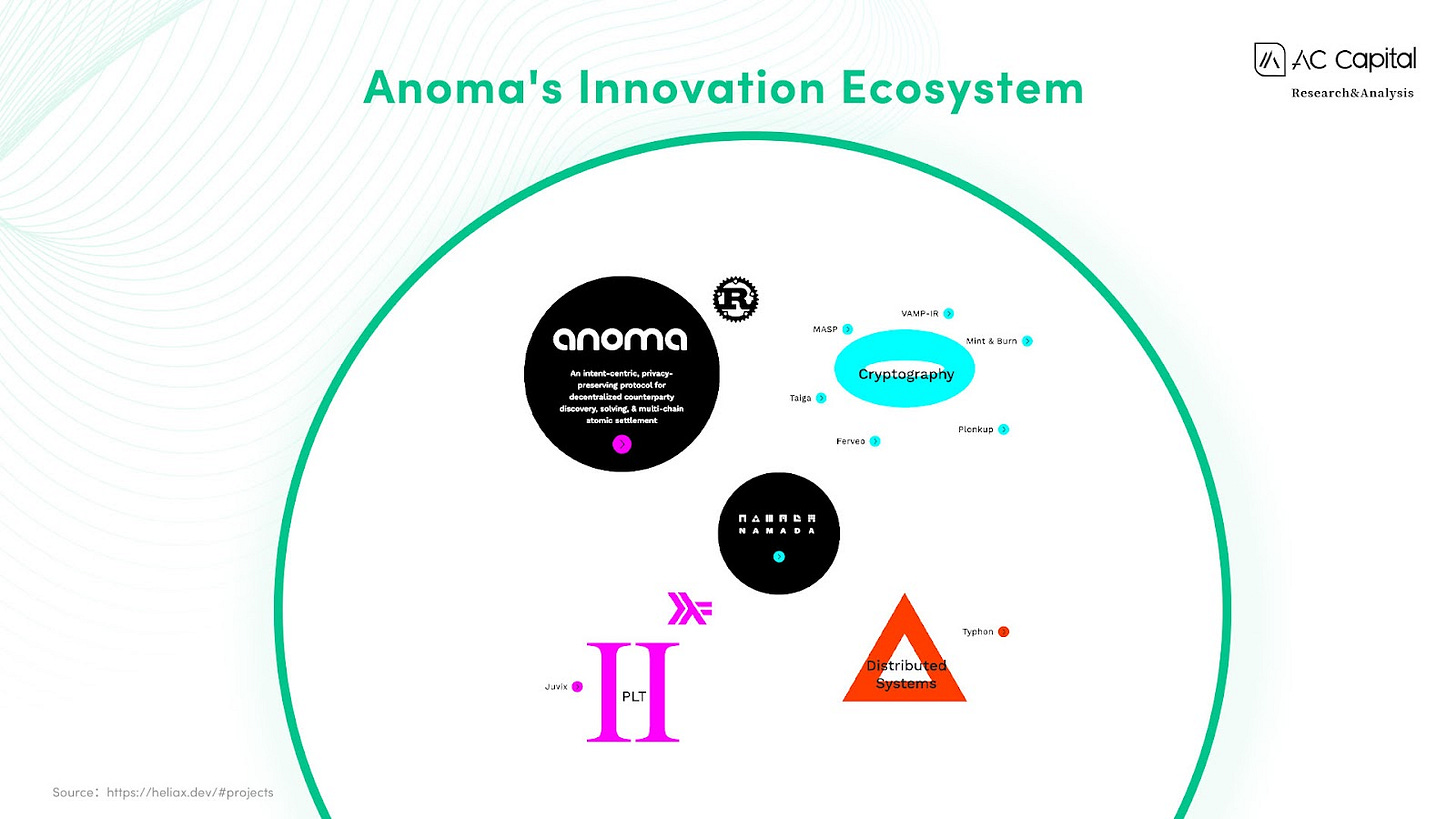
Source: https://heliax.dev/#projects
Although many institutions such as CMCC Global, Electric Capital, and Delphi Digital are enthusiastic about Anoma and express that the intent-centric architecture has unlimited potential in the future, currently, the top-down Anoma has only laid a good technical foundation, but has not seen exciting landing applications. On the other hand, TG Bot uses on-chain automated trading tools to open up the imagination of landing scenarios for intent segmentation.
Unibot is a Telegram-based trading bot (TG Bot) that allows users to automate DEX trading through Telegram and provides sniper purchases, copy trading, DEX limit orders, privacy, anti-MEV, and other functions. Unibot replaces the cumbersome interaction of Uniswap with Intent and provides a convenient DeFi interaction experience. Unibot has also spawned a batch of TG Bot imitations, and the total market value of the current TG Bot track has approached $200 million.
Top-down Anoma is innovation, and bottom-up TG Bot is change; top-down Anoma starts from the intent-based underlying architecture, but the team's progress is slow; although TG Bot brings users a brand-new on-chain interaction interface, it is not intelligent and has many security risks.
The two different paths have the same purpose—simplifying user interaction and introducing new programmable, customizable user interaction interfaces—User Intent Layer, allowing users to skip complex on-chain interactions and define transaction states based on user intent.

AI is the New UI: Command Interaction vs. Intent Interaction
The above two use cases have provided a basic understanding of intent, and now it's time to explore the fundamental changes AI brings to the most basic level of the crypto world—the user interaction interface. The AI paradigm is introducing the third type of user interface paradigm in the history of computing, shifting to a new interaction mechanism where users tell the computer what they want, rather than how to do it.
Paradigm one: Batch processing.
Paradigm two: Command-based interaction design.
Paradigm three: Result specification based on intent.
In history, every revolutionary interaction mode has produced a brand-new business model. Generative AI based on LLM has brought disruptive changes to human-machine interaction, directly transforming the original human-machine interaction with various software UIs into interaction with Chatgpt chat windows, which is an unprecedented interaction experience. LLM+crypto brings a new proposition of intent-based interaction to the crypto world, and LLM has the potential to make blockchain interactions more intelligent by discovering and describing user intent.

Evolution of the Concept of Intent, Interaction Paradigm, Current Situation, Trends
After a deep understanding of the trend of AI intelligence behind intent, we further explore the evolution of the concept of intent. Intent is not a new concept, but has been present since the Web2 era. With the rise of search engines such as Google, users can input intent, and the search engine provides relevant search results to satisfy that intent.
With the rise of e-commerce platforms such as Amazon and eBay, there has been a significant shift in intent-based architecture. Users can now express the intent to purchase products, and the platform is responsible for logistics. In early 2017, Gartner released a report "Innovation Insight: Intent-Based Networking Systems," formally proposing the concept of Intent-based Networking, where the key is to present users with an interface where they only need to express what they want, and the platform handles the business details.
Intent-based networking is the development trend of network automation and intelligence in the Web2 era, and Gartner's research vice president Andrew Lerner pointed out in 2017 that intent-based networking will be the next milestone in the network field.

Source: https://www.gartner.com/en/documents/3599617
Evolution from Web2 to Web3, the concept of intent in Web3 is not yet clear, but there are some consensus:
Definition given by Paradigm: Intent is a set of declarative constraints that allow users to delegate transaction creation to a specialized third-party participant network while retaining complete control over the process.
Definition given by the underlying Dapp architecture Anoma based on intent: Intent is a message sent by the user to express custom preferences. Intent is the user's definition of the constraints on what the system can do, rather than the specific execution path.
Definition given by the intent-based transaction infrastructure Propellerheads: Intent is the part of the transaction that requires assistance from others. Intent simplifies complex transactions by outsourcing the difficult parts to third parties.
In real-world use cases of Web3-based intent transactions, users create intent off-chain, outsource it to a solver off-chain, encapsulate the complexity of blockchain interaction to the solver, while retaining complete control over the process on-chain, and reduce the threshold for on-chain interaction.

Source: https://www.brink.trade/blog/powerful-intents-part-1
Intent also brings the concept of LLM architecture—intent centric—architecture centered on user intent. Currently, intent-centric related crypto protocols and infrastructure are embedded in the interaction layer between users and Crypto, providing a better on-chain interaction experience with the help of LLM.
LLM+Crypto brings a new human-machine interaction paradigm that can directly convert user intent into smart contract calls. Users only need to express intent like using Apple's Siri, and the robot/AI Agent/third-party solver helps complete complex on-chain operations. In the future, intent-based Web3 interactive intelligence has the potential to greatly reduce the complexity of user on-chain interactions.
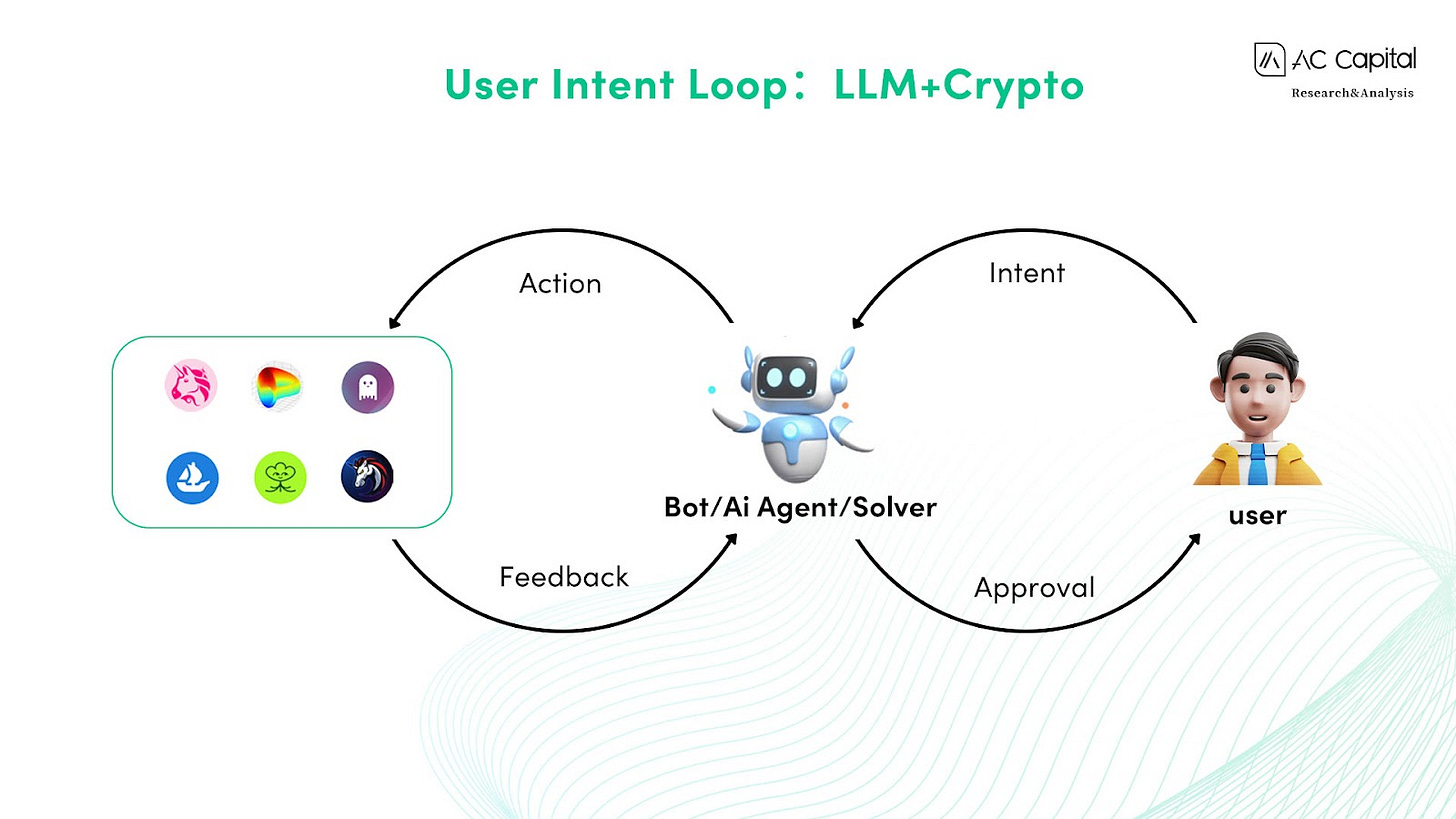
AI is the New UI, more and more Web3 projects are exploring the power of intent, whether it's intent-based Dapps or intent-based underlying architecture, they release the potential of intent from different perspectives. We attempt to categorize this rapidly developing field from an interaction perspective into four major categories and track the latest developments and trends:

Infrastructure: (Intent-centric intent architecture layer)
DappOS: The first intent-centric Web3 operating protocol, which builds an intermediate layer between users and public chains, cross-chain bridges, and other crypto infrastructure, allowing Web3 users to seamlessly interact with products. DappOS recently released V2.
Flash 2.0 SUAVE: SUAVE is an independent plug-and-play modular MEV full-chain sorting layer. Preferences (the core concept of SUAVE) is similar to the concept of Intent, both providing a way for ordinary users to customize transactions and ultimately help users achieve the best execution. Flashbots plans to launch SUAVE Centauri in 2023Q4.
Anoma: A general Dapp architecture centered on intent, which can be modularly deployed to L1, L1.5, L2, and embedded in various EVM frameworks for invocation. The latest development in the Anoma ecosystem is the upcoming v0.22.0 testnet for Anoma's privacy settlement Layer1—Namada.
Cow Protocol: CoW Protocol builds the underlying settlement network for traders and solvers and released the new intent system CoW Hooks in July to achieve custom DeFi operations. In August, CoW Protocol processed a total transaction volume of 1.05 billion and generated a profit of 5.3 million.
Supporting Facilities: (Supporting infrastructure related to intent, and account abstract wallets)
ERC 4337: The User Operation of ERC 4337 is based on the user's intent, including paying gas tokens, payment choices, login methods, replacing the current transaction mempool to achieve account abstraction and improve wallet interaction experience.
Supporting infrastructure related to account abstraction: Bundler infrastructure (StackUp, Blocknative, Alchemy Rundler, AA-Bundler, infinitism Bundler), Wallet SDK (Safe, ZeroDev, Biconomy).
Supporting infrastructure related to intent: Juvix (intent-based programming language), Seaport (open-source NFT trading protocol), Gelato (Web3 automated execution layer providing automated services for smart contracts), okcontract (low-level intent automation tool), Delegatable (smart contract authorization proxy tool), Hyper Oracle (off-chain automation service), symmio (intent-based on-chain derivative trading framework).
Enterprise Applications: (Integration of Dapp's intent infrastructure, API, modular intent layer, domain-specific solvers)
Transaction Solver API: PropelleHeads;
Intent API: EnsoFinance;
Intent Transaction Infrastructure: Bob the Solver, Brink;
Composable Intent Tools: Essential.
Consumer Applications: (Intelligent user interfaces for interaction such as Wallets, Dex, Web3 Ai Agents, intelligent search engines)
Wallets: Safe, Bitconomy, Argent, Ambire, Sequence, Versa, A3SProtocol;
Dex: CowSwap, Paraswap, Uniswap, 1inch, BananaHq, basedmarkets;
Intelligent Frontend: Unibot, Dora, Web3 Analytics, kaito.ai.
Based on intent architecture, supporting facilities, and enterprise-side applications (due to space constraints, only listed without elaboration), an attempt is made to address the underlying challenges of intent implementation. However, infrastructure cannot be built in a day. The trend of intent consumer application layer is what truly excites people. The evolution of interaction entry points such as wallets and Dex shows the potential of intelligent interaction. Wallet intelligence: ERC-4337 introduces a new UserOps layer, where users express intent, and then the bundler (Bundler) converts these intents into executable signed transactions. In recent months, the number of ERC4337 users has increased significantly. ZeroDev, Biconomy, and Safe modular intelligent accounts are the most motivated to promote AA + intent, and AA + intent has the potential to give birth to wallet intelligence (SCW).

DEX architecture transformation: Intent-based trading aims to improve capital efficiency and user interaction experience. CoW Hooks concatenates complex actions such as trading, bridging, staking, and depositing. UniswapX already allows users to sign intent off-chain matching and on-chain settlement. The number of intent-based DEX such as BananaHq, Brink, basedmarkets is gradually increasing, and a new Intent-based RFQ narrative (SYMMIO) is unfolding. With more and more DEX and aggregators transitioning to intent-based architecture, the DEX landscape is undergoing significant changes.
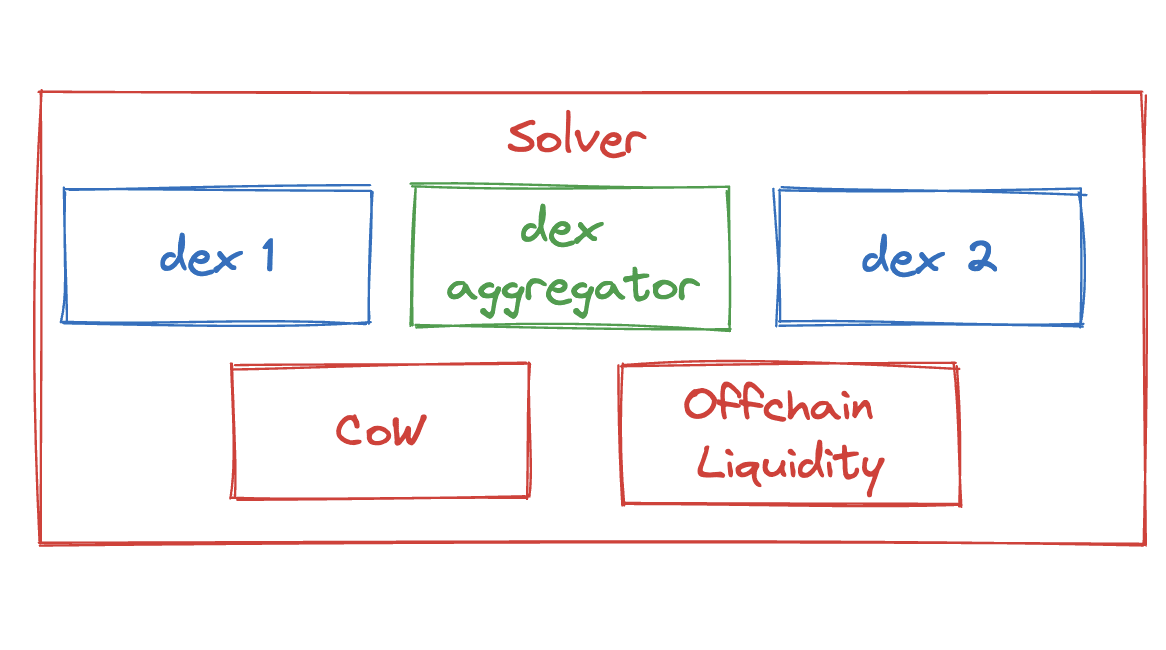
Source: https://twitter.com/BananaHQio/status/1694013407929020740
Intelligent interaction entry points: Similar to the transformation of Web3 frontend interaction interfaces by TG Bot, interaction entry points focus on understanding user intent and systematically converting it into automated, actionable tasks. Not only TG Bot-like trading bots, but also Web3 Ai Agents and Web3 intelligent search engines are making Web3 interactions more intelligent.
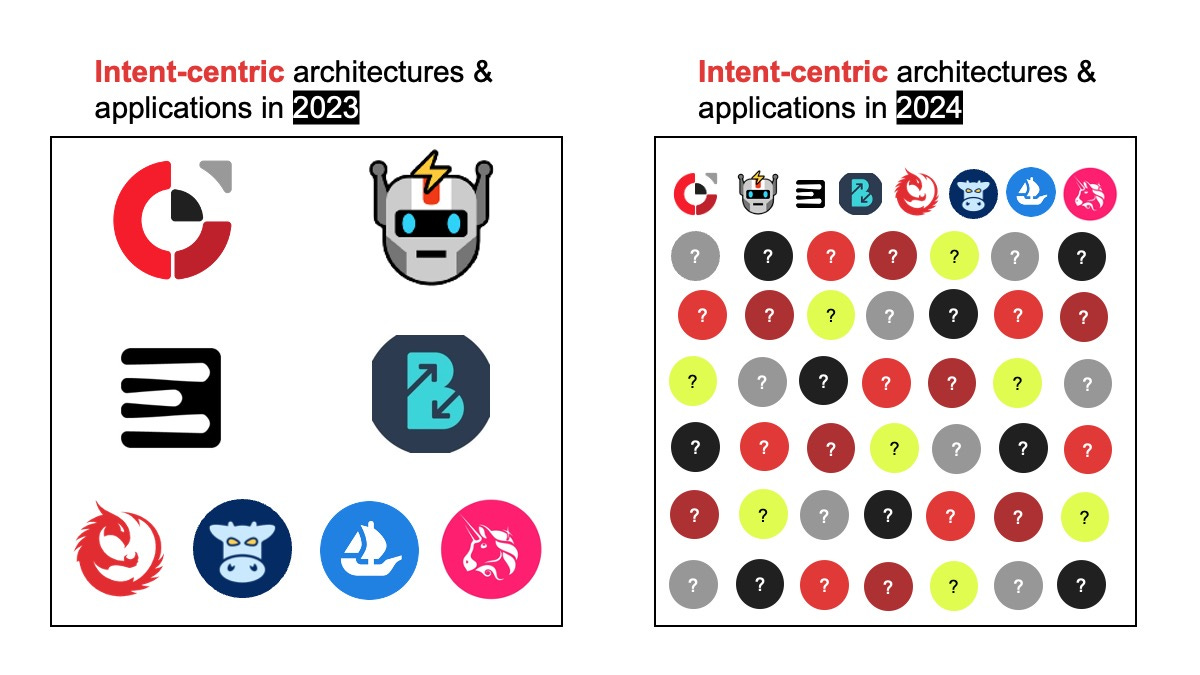
Challenges and Prospects of Web3 Interactive Intelligence
In the past, the user interaction experience of Web3 products has indeed hindered widespread adoption. The wealth effect on-chain has masked many product issues. At the ETHCC conference in July, developers extensively discussed the future of intent-centric, how it can help users achieve more intelligent DAPP interactions in Web3, but the application of intent-centric still faces many challenges:
Lack of intent-related programming languages (similar to Juvix)
Lack of suitable intent architecture (similar to Anoma)
Lack of domain-specific solvers (similar to Bob The Solver)
Centralized and closed intent implementation (similar to CowSwap)
Lack of frontend intent recognition solvers (similar to Unibot)
Lack of composable intent implementation (similar to Brink)
Intent security risks (mentioned in the Paradigm article)
Challenges and hopes coexist. With the emergence of intent-centric protocols, the future of Web3 has the potential to evolve into a more user-friendly intelligent interaction interface. Users can interact with mainstream applications such as Uniswap, Blur, AAVE, all in one place, making interaction as simple as hailing a ride with Uber. This presents a real opportunity for Web3 Dapps to surpass Web2 in terms of user experience. More importantly, with the combination of Anoma, Flashbots SUAVE, and DappOS, the future intent-centric Web3 on-chain interactions will be more intelligent, customizable, and fair. By centering on intent, the power of decision-making will be back in the hands of users, allowing ordinary users to empower third-party robots/solvers to complete customized transactions (fees, slippage, privacy, cross-chain, MEV, or other intents). In the future, users will no longer be passive participants on-chain or exploiters of MEV Searchers and Validators, but the true helmsmen of on-chain activities. Looking ahead to the future of intelligent Web3 interactions, whether it's account abstraction, chain abstraction, or intent, Web3 is finally focusing on user experience, and the dawn of intelligent interaction is about to illuminate the dark forest.
Acknowledgments
Special thanks to Web3 Analytics, Crypto V, Haotian, Jason Chen, Luke, Grace Deng, SixSix.eth, POOR DAO, #017, armonio.eth, Kiwibig.eth for their valuable discussions, opinions, and feedback on this article.
References
https://twitter.com/mindaoyang/status/1696819223073571016https://twitter.com/DelphiDigital/status/1696626118164652295_
https://twitter.com/awasunyin/status/169540582237605496
https://twitter.com/0xrencf/status/1664320654819180564https://twitter.com/LukeWasm/status/1691434740635873280_
https://twitter.com/DodoResearch/status/1694652157830836640
https://www.coindesk.com/business/2023/05/31/crypto-infrastructure-firm-anoma-foundation-raises-25m/https://dune.com/tk-research/telegram-botshttps://ethglobal.com/showcase/bob-the-solver-yxtgphttps://www.youtube.com/watch?v=mdYwfW6tMJ8&t=85shttps://www.youtube.com/watch?v=G0nFyq9DDPwhttps://www.youtube.com/watch?v=NMqaCGxSRQYhttps://www.youtube.com/watch?v=DIvHVvjwhAs&t=22shttps://medium.com/banana-sdk/intent-is-all-you-need-part-1-1c5c11ee3b6fhttps://medium.com/alliancedao/intents-are-just-7deaeb4336behttps://medium.com/@okcontract/introducing-low-level-intents-a-summary-of-our-talk-at-ethcc-6-5f8246c8063https://bwetzel.medium.com/intent-based-architectures-and-projects-experimenting-with-them-c3ee63ae24chttps://mirror.xyz/sevenxventures.eth/fknoBf3zOoBf55zNFBpMQAIat6iCT9tvrN2AY1j4Sv4https://dba.mirror.xyz/NTg5FSq1oYiLKJrKBOsOkyeiNUPobvZUrLBGceagghttps://www.propellerheads.xyz/blog/intents-and-where-to-find-themhttps://www.propellerheads.xyz/blog/blockchain-and-llmshttps://www.paradigm.xyz/2023/06/intentshttps://review.stanfordblockchain.xyz/p/24-intents-principles-and-practice?utmsource=profile&utmmedium=reader2https://www.nngroup.com/articles/ai-paradigm/https://aigc.phodal.com/llm-arch-user-intent-oriented-design.htmlhttps://gracedeng.substack.com/p/decoding-intents-revolutionizinghttps://web3datadegens.substack.com/p/the-future-of-transactions-for-dummies?utmcampaign=post&utmmedium=webhttps://thedefisaint.substack.com/p/intent-centric-a-narrative-worthhttps://writings.fetcch.xyz/how-to-think-about-cross-chain-cowswaphttps://www.brink.trade/blog/powerful-intents-part-1https://blog.essential.builders/introducing-essential/https://www.propellerheads.xyz/blog/intents-and-where-to-find-themhttps://writings.flashbots.net/the-future-of-mev-is-suave/https://www.blocknative.com/blog/ethcc-understanding-4337https://writings.flashbots.net/mevm-suave-centauri-and-beyondhttps://ethresear.ch/t/how-can-we-decentralize-intents/16456https://www.gartner.com/en/documents/3599617
免责声明:本文章仅代表作者个人观点,不代表本平台的立场和观点。本文章仅供信息分享,不构成对任何人的任何投资建议。用户与作者之间的任何争议,与本平台无关。如网页中刊载的文章或图片涉及侵权,请提供相关的权利证明和身份证明发送邮件到support@aicoin.com,本平台相关工作人员将会进行核查。




